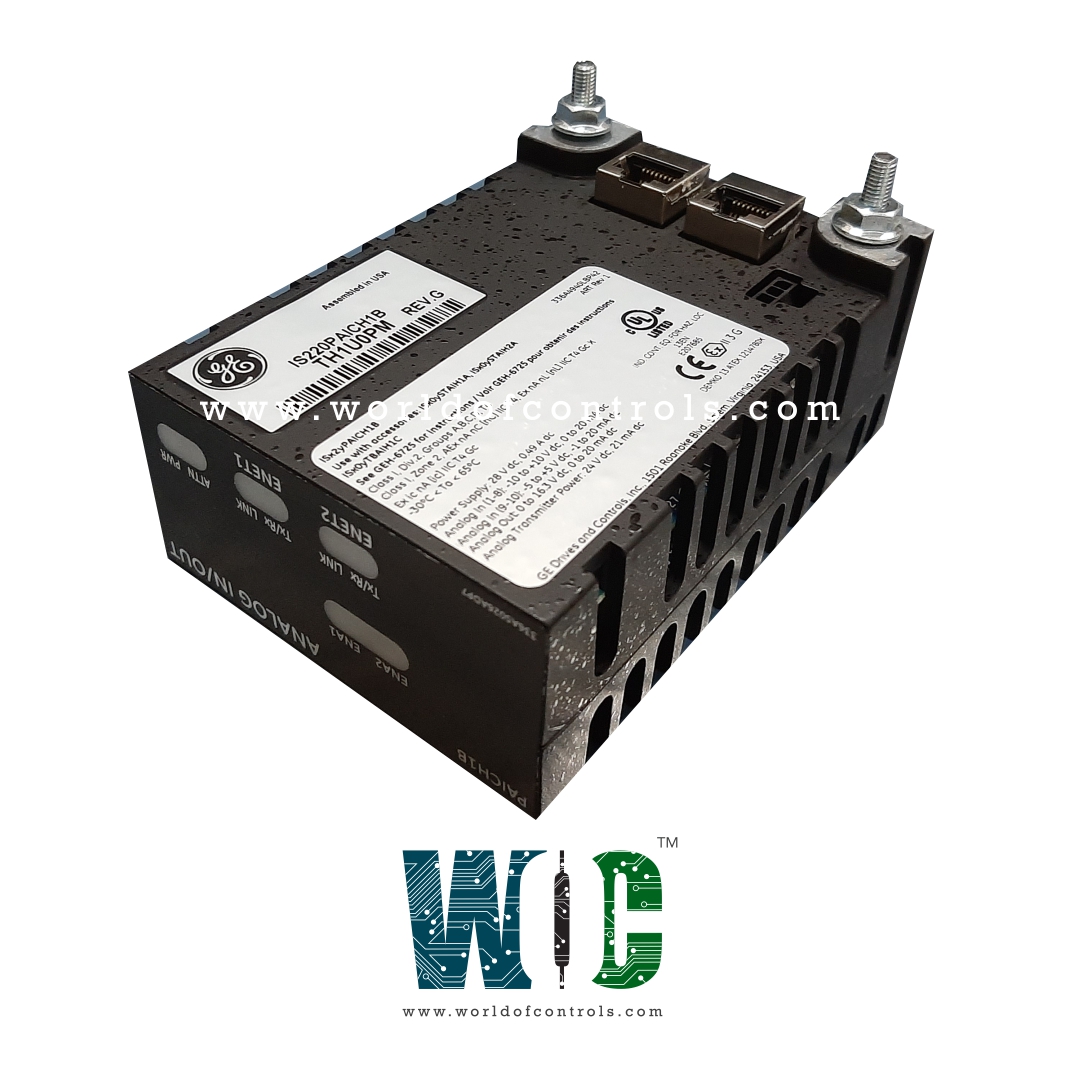
World Of Controls understands the criticality of your requirement and works towards reducing the lead time as much as possible.
IS220PAICH1B, REV A - Analog I/O Module is available in stock which ships the same day.
IS220PAICH1B, REV A - Analog I/O Module comes in UNUSED as well as REBUILT condition.
To avail our best deals for IS220PAICH1B, REV A - Analog I/O Module, contact us and we will get back to you within 24 hours.
SPECIFICATIONS:
Part No: IS220PAICH1B, REV A
Manufacturer: General Electric
Function: Analog I/O Module
Series: Mark VIe
Input voltage: 125 V
Input Span: 1 - 5 Vdc
Input Converter Resolution: 16-bit A/D Converter
Common Mode Voltage Range: 5 V
Scan Time: 5 ms
Total Output: 400 W
Total Output Power: 400 W
Output Voltages: +5, ±12, ±15, ±28 V DC
Temperature: 30 to 66°C
Technology: Surface Mount
Board Size: 8.26 cm High x 4.19 cm Wide x 12.1 cm Deep
Availability: In Stock
Country of Origin: USA
Manual: GEH-6721_Vol
FUNCTIONAL DESCRIPTION:
IS220PAICH1B, REV A is an Analog I/O Module manufactured and designed by General Electric as part of the Mark VIe Series used in GE distributed turbine control systems. The Analog I/O pack (PAIC) provides the electrical interface between one or two I/O Ethernet networks and an analog input terminal board. The PAIC contains a BPPx processor board and an acquisition board specific to the analog input function. The I/O pack is capable of handling up to 10 analog inputs, the first eight of which can be configured as +5 V or ±10 V inputs, or 4-20 mA current loop inputs. The last two inputs may be configured as ±1 mA or 4-20 mA current inputs.
The load terminal resistors for current loop inputs are located on the terminal board and voltage is sensed across these resistors by the PAIC. The PAICH1 also includes support for two 0-20 mA current loop outputs. The PAICH2 includes extra hardware to support 0-200 mA current on the first output. Influt to the I/O pack is through dual RJ-45 Ethernet connectors and a three-pin power input. Output is through a DC-37 pin connector that connects directly with the associated terminal board connector. Visual diagnostics are provided through indicator LEDs.
COMPATIBILITY:
INSTALLATION:
OPERATION:
WOC has the largest stock of GE Distributed control system replacement parts. We can also repair your faulty boards and supply unused and rebuilt boards backed up with a warranty. Our team of experts is available round the clock to support your OEM needs. Our team of experts at WOC is happy to assist you with any of your automation requirements. For pricing and availability on any parts and repairs, kindly contact our team by phone or email.
How do you connect an Analog I/O Module to a system?
Analog I/O modules connect to the system through physical ports like Ethernet or serial communication ports. These modules also interface with input/output terminal boards for signal processing and conversion.
How is the Analog I/O Module powered?
Analog I/O modules are typically powered through a dedicated power input connector. The control system or an external power source provides the power. Some modules also feature soft-start capabilities, allowing them to be powered on without risking damage due to current surges.
What types of terminal boards are compatible with Analog I/O Modules?
Analog I/O modules are designed to interface with specific terminal boards. Using compatible boards to ensure proper signal conversion and communication is important. Compatibility can vary by manufacturer and model.